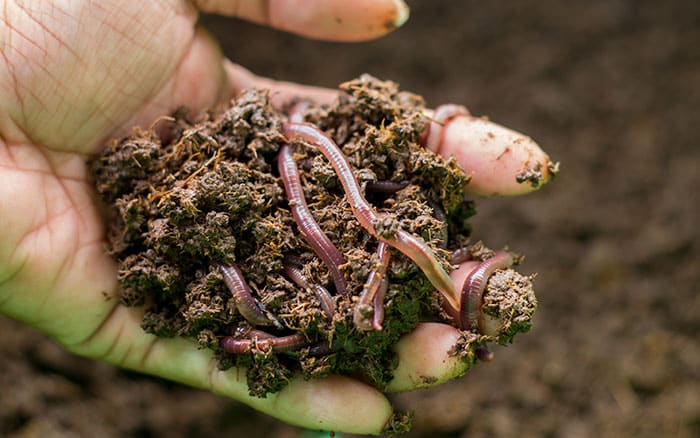Wormeries will allow you to compost, even if you don’t have sufficient space in your garden for a huge compost heap or compost bin.
You’ll be rewarded with compost to use in your garden as well as helping you send less waste to landfill, so it’s win-win.
What is a wormery?
Most commonly, they are made up of two compartments. The lower collection area for the liquid that is produced and the upper area which is where you place your kitchen waste. The top area is where the worms actively get to work.
Composting worms are known as brandling worms, manure worms or European Nightcrawlers. And they live in decaying organic matter. These species differ from earthworms, who are soil dwellers and therefore unsuitable for use in composting.

Composting conditions

To make the most out of your worm bin, the ideal conditions for the creatures are warm, moist and around 18-25˚C. The preferable position is in a shed or sheltered area. So that it is not too hot in the summer and not too cold in the winter.
Bear in mind that, if neglected, they can sometimes produce odours, so think about where’s best to place it. Gardeners with limited space, however, do have the option of keeping their wormery on a balcony, on the patio or even in a utility room if need be.
Step-by-step
Step one
At the bottom of the bin, place an 8cm layer of moist material, like old compost to create a humid layer for the worms to burrow and digest their food.
Step two
Add the composting worms.
Step three
Put in no more than an 8-10cm layer of kitchen waste.

Step four
Let the worms settle into their new environment by leaving them for about a week.
Step five
When you want to add more waste, chop it into smaller pieces, placing it on top of the compost or bury the food within the compost to create feeding pockets.
Step six
If you have a wormery with stacking trays, empty the bottom compost tray and return it to the top of the stack. If you don’t, you’ll need to separate the worms from the compost and return the worms to the bin on a new layer of bedding.
Step seven
Use your worm compost as a general soil conditioner. This will help your plants thrive. The drained liquid can be used as fertiliser on plants once diluted as 1-part liquid to 10 parts water.
Spoiled rotten

Worms will appreciate any cooked vegetables, and most raw vegetables. Avoid shallots, leeks and onion as the smells aren’t appealing to them. Teabags, eggshells, coffee grounds can all be added alongside small amounts of bread, weeds and leaves.
Avoid dairy products, fat, meat fish and bones, these may attract pests to the area. Citrus fruits have been said to increase acidity and may harm the worms, so avoiding placing them in the wormery. If you do, adding them in small amounts is advisable.
Worming worries
Adding too much waste that the worms can’t get through quick enough may cause the wormery to produce an odour. Remove any excess food and be sure to wait until the worms begin to digest the top layer of food before adding further waste.
Contents that are too wet may also cause problems. By draining excess liquid or adding shredded paper to absorb moisture and increase air circulation will get the problem under control.

If a problematic smell persists, it may be worth checking the pH of the conditions, as they may be too acidic. Composting worms prefer a pH between 6.5 and 7. So a small amount of calcified seaweed, garden lime or ground chalk or limestone will adjust the conditions to a more neutral state.
What’s the difference?

The worms that are used in wormeries are not the same as earthworms, and their main difference is that earthworms are burrowing types that stay away from the surface, whereas compost worms like living near the surface. This makes compost worms more useful in composting because they will eat the materials that are added to the bin.
Now you’re ready to get started with your own wormery, you’ll be sending less waste off to landfill and producing your own compost that you can use in your garden.

Leave A Comment